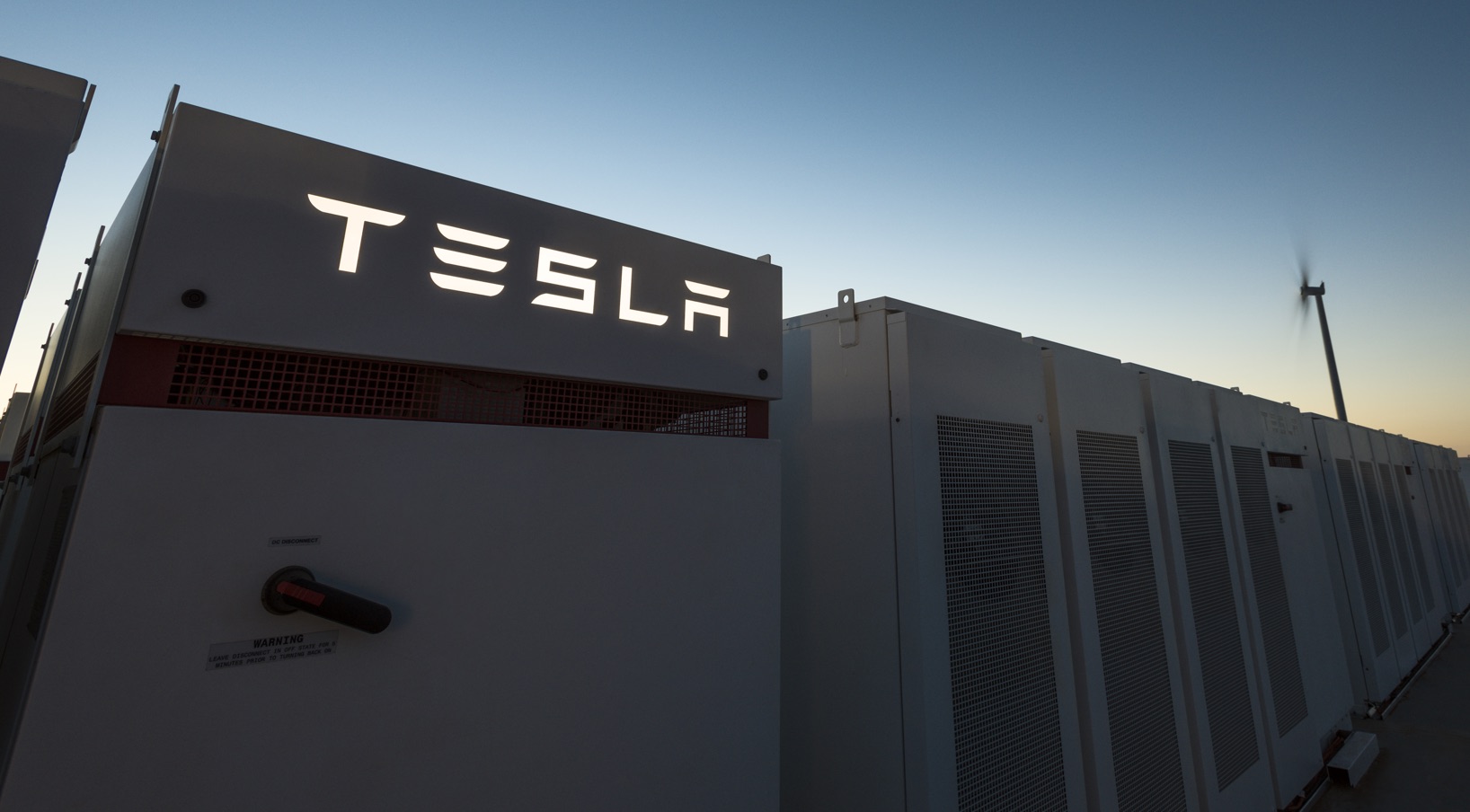
Tesla is taking their smart power grid and heading north into the Canadian province of Nova Scotia. Nova Scotia Power recently finished setting up a pilot project that will use a combination of Tesla’s Powerwall 2 home batteries and utility grade Powerpack batteries in order to create a more reliable wind power system. The Elmsdale-based Intelligent Feeder Project will fill in the gaps in the electrical grid by topping up the Powerpacks whenever a nearby wind turbine system generates excess power. Then that power is delivered and stored as energy for local homes when there’s an outage, or a turbine system stops working for some reason.
This test run is backed by the Federal Government and should go live before the end of February. It’s anticipated to last until 2019, although the Powerpacks will remain after everything is over. Nova Scotia Power is very interested in how this will help both residents, as well as it’s bottom line. If you’re not familiar with Nova Scotia, it can be exposed to some pretty aggressive weather. Nova Scotia often gets hit with hurricanes or extremely bad winter weather. Which means power can get knocked out pretty quickly. Leaving residents without power for days, even weeks at a time.
This project isn’t exactly a large scale experiment. The Elmsdale battery station will serve 300 homes, and 10 customers have Powerwall 2 batteries. But what this does is shows the world the growing interested in storage batteries like Tesla. This is a way to show how we can stabilize power. The other reason that this is important is that it could show the future of electricity for rural communities. As I mentioned, Nova Scotia is a good place to pilot this project both from a rural perspective, but as well as a place that is subjected to a lot of bad weather.

This project is similar to their initiative in Australia. Although, this is a much smaller initiative. Jill Searle, Project Manager for Nova Scotia Power, had this to say about the project:
“Technology such as battery storage is making traditional utility systems smarter. This project is one of the first of its kind that we know about, and we’re excited to be leading the charge. It has great potential to positively impact the reliability of our system and help us provide power to customers when they need it most.”
Mark Candow and his family received one of the Powerwalls. He said that his family is environmentally conscious and they are glad that the Tesla Powerwall will enable them to use more renewable energy when the wind is not blowing. Candow also notes that he has two young children, and he cares about sustainability and using energy in a smarter way.
These are the first Powerwalls to be installed in Canada. Canada doesn’t have as many issued with power that other regions do, which is why Tesla is focusing its limited production capacity in other regions. To put this into perspective, the current population of Canada is 36 million. The population of California is 39 million, and New York State lands at around 19 million. My point is that while the population is low, this is a good place to use this technology to help Tesla (and others) understand what the challenges are in order to be able to really make some progress.

[…] post Tesla Takes Their Smart Power Grid Experiment to Canada appeared first on Saintel […]